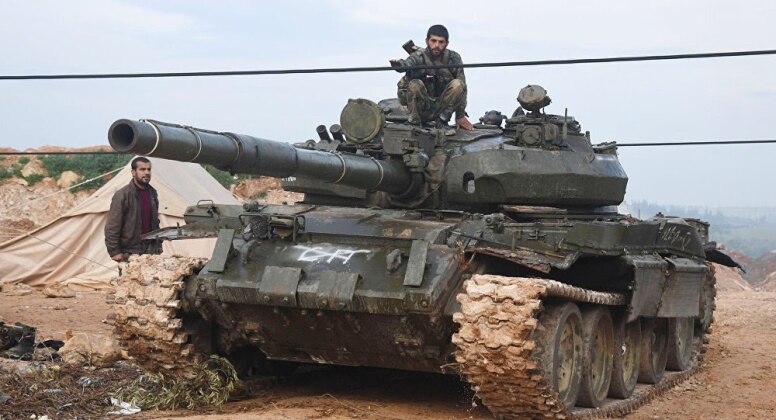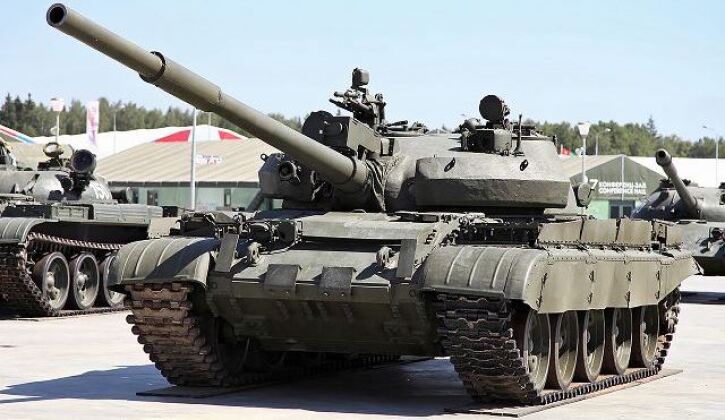News
Russia’s New T-62 Tank Variant Built For 21st Century Engagements: Will It Be Effective in Ukraine?
In over a year of continuous war in Ukraine the Russian Military has revealed a number of new systems, some of which, like the penetration aids on its Iskander ballistic missiles, were in service beforehand but unknown, while others, such as a new T-72 tank variant with armour closely modelled on that of the T-90M tank, were developed specifically to respond to the conditions of the Ukrainian theatre. Following the emergence of the new up-armoured T-72s in December 2022, another new tank class began to appear in January which is a heavily enhanced variant of the older T-62M tank. The most notable improvement to the tank is its integration of the 1PN96MT-02 thermal sight, which although old and dating back to the 1980s, still provides far greater situational awareness than baseline T-62Ms or than the large majority of tanks in Ukrainian service. It provides a nighttime target detection range of 2000 metres. While the large majority of Ukrainian operated tanks have no thermal sights whatsoever, several of those that do including the new British supplied Challenger 2 tanks still use similarly old first generation sights.

Russia retired T-62s from frontline service until the early 2010s, but after donating significant numbers to the Syrian Arab Army for joint efforts against NATO-backed insurgents, more of the vehicles began to be deployed to the Ukrainian front from late 2022 primarily to provide more armour to units from Eastern Ukrainian separatist units. These have largely been incorporated into the Russian Military since large parts of Eastern Ukraine was integrated into the Russian state in September 2022 – a move which has not been recognised internationally but has had significant military implications. The T-62 is less complex to operate and requires less maintenance than the T-72, making it an optimal choice to introduce for militia units, and potentially in future for conscript units in the Russian Army itself.

The first T-62s entered service in 1961 integrating the most advanced guns in the world, were two decades ahead of Western tank designs in integrating smoothbore guns and APFSDS (armour-piercing fin-stabilized discarding sabot) rounds. The guns themselves provided significantly higher armour penetration due to its greater muzzle velocity. The tanks first saw combat in Arab-Israeli conflicts of the early 1970s, where although let down by the limited training of Egyptian and Syrian operators, they were still considered much more capable than equivalent Western vehicles when captured and analysed by Israeli forces. Indeed, seeing how far behind Western tanks had fallen was thought to have been a key factor leading Israel to pursue its own tank program, the Merkava, from 1973 to ensure it would not continue to face a growing disadvantage against its neighbours’ Soviet-supplied armour. Aside from its main gun, the T-62 had important advantages in automotive and suspension systems, turret and frontal armour and gun stabilisation, as well as a much smaller profile for further improved survivability. Its APFSDS projectiles proved so far superior to anything in Western arsenals that developing an equivalent round was made a priority for the United States Army from 1973, with such munitions entering service from 1978 over 20 years behind the Soviets. T-62s continued to demonstrate strong advantages over M60s in the Iran-Iraq War when there was not a strong discrepancy in training favouring operators of the American tanks as there had been in Arab-Israeli conflicts, leading to overwhelming Iraqi victories.

While the Soviet Union maintained a significant lead in the capabilities of its frontline armour, this diminished significantly following the state’s disintegration as higher end tank classes such as the T-80UK were put out of production and promising new programs like the T-95 were terminated in Russia. The T-62’s return to service, and continued reliance on the T-72, now half a century old, and its derivative the T-90, would have been unthinkable had Russian tank development maintained trajectories even close to those of the USSR. Nevertheless, the T-62s returning to service are not 1980s technology and are based on the enhanced T-62M variant that entered service in the early 1980s with enhancements being integrated to prepare them for 21st century warfare. Considering that Ukrainian tanks almost all date back to the 1970s, and its Leopard 2 and Abrams tanks being supplied by the West are from the late 1970s and early 1980s, all tanks in the theatre are similarly old. What could make the T-62M particularly viable is that tanks in the Ukrainian theatre have been primarily deployed for infantry support, rather than to engage other tanks, with the vehicles, mobility and access to fragmentation projectiles, which Western supplied tanks lack, potentially making it a valued presence on the battlefield.












